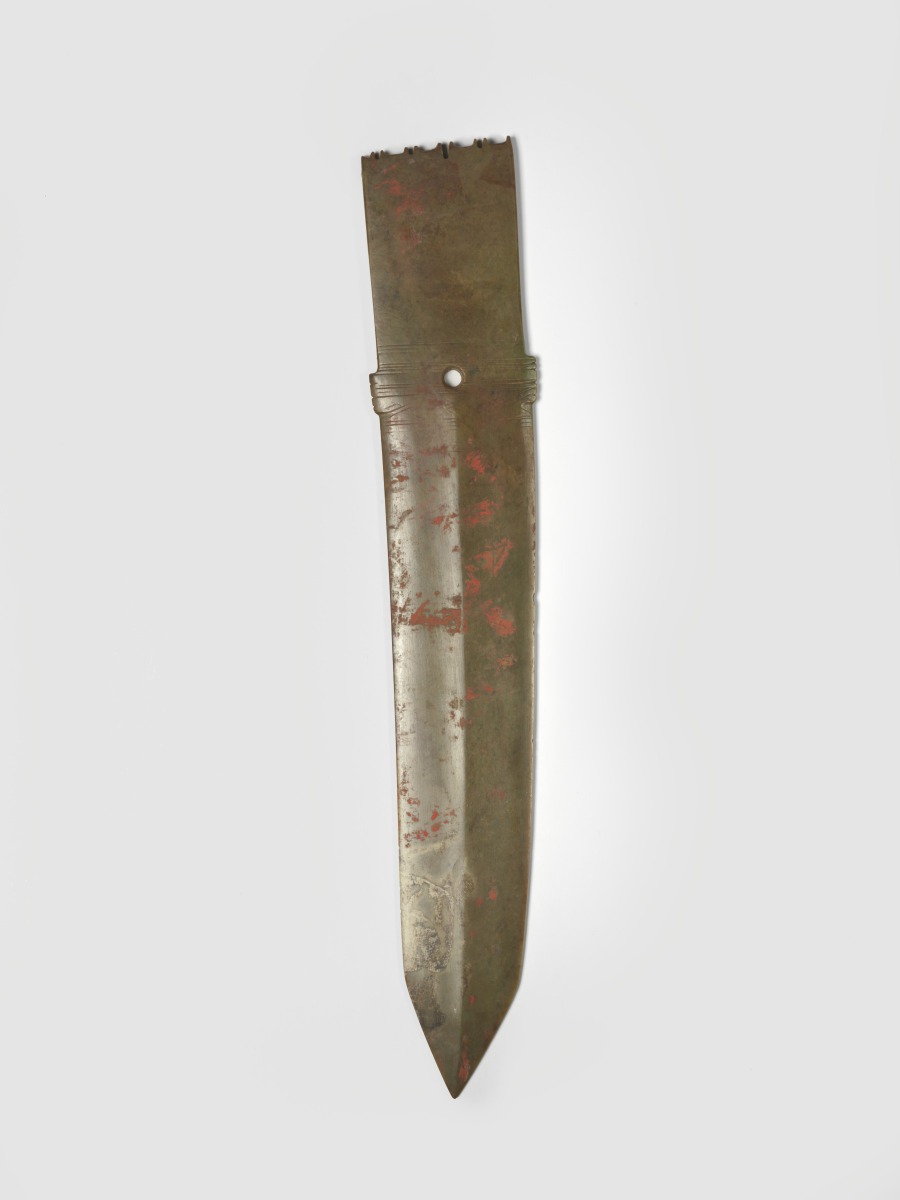
Dagger (Ge) (Translation)
玉戈 商晚期 (Primary Title)
Unknown (Artist)
Made of various materials, dagger-axes, known as ge, evolved from hunting and farming tools to weapons and ritual objects. The earliest jade examples, dating to the Erlitou Culture (2200-1700 BC) were excavated from burial sites in Luoyang, Henan Province. The production of jade dragger-axe increased with the development of bronze-carving tools during the Shang dynasty. This dagger-axe features a long, double-edged blade with a median ridge, incised parallel lines, and lozenges at its notched and perforated base. Formerly attached to a wooden handle for ceremonial events, it resembles in both shape and design fine examples of ge excavated from Yinxu, the Shang capital in Anyang, Henan Province. Traces of red pigment and woven marks on the surface suggest this piece was once colored, and wrapped in fabric for storage or burial.
Shang dynasty (1600-1045 BC)
Adolph D. and Wilkins C. Williams Fund
Newark Musuem, N.J., 1941
Detroit Art Institute, 1942
Brooklyn Museum, 1943
Los Angeles, 1948
Palm Beach, 1950
Portland Museum, 1955
Wadsworth Atheneum, 1958
Detroit Art Institute, 1942
Brooklyn Museum, 1943
Los Angeles, 1948
Palm Beach, 1950
Portland Museum, 1955
Wadsworth Atheneum, 1958
Image released via Creative Commons CC-BY-NC
Some object records are not complete and do not reflect VMFA's full and current knowledge. VMFA makes routine updates as records are reviewed and enhanced.

